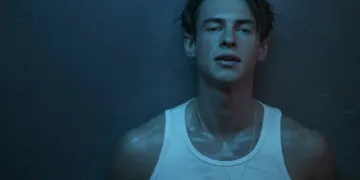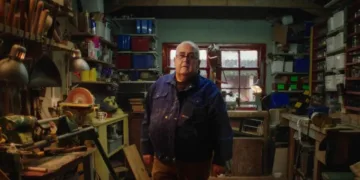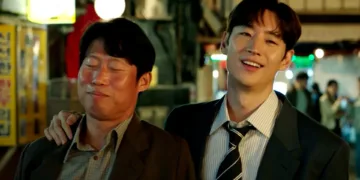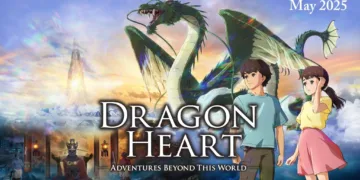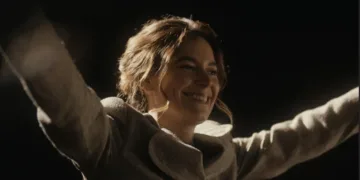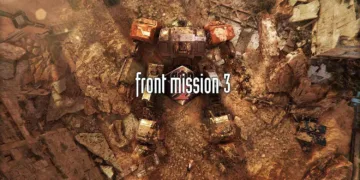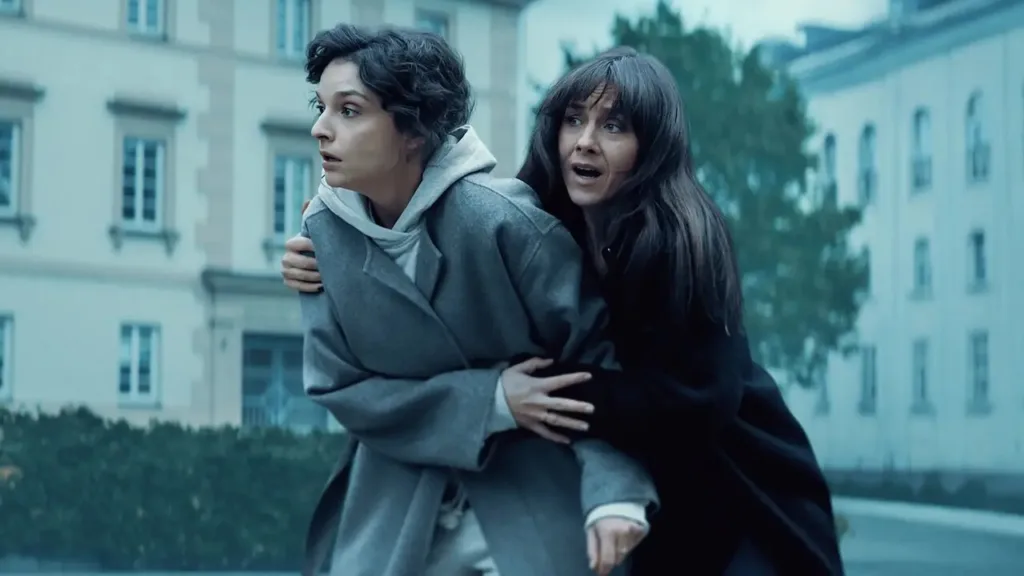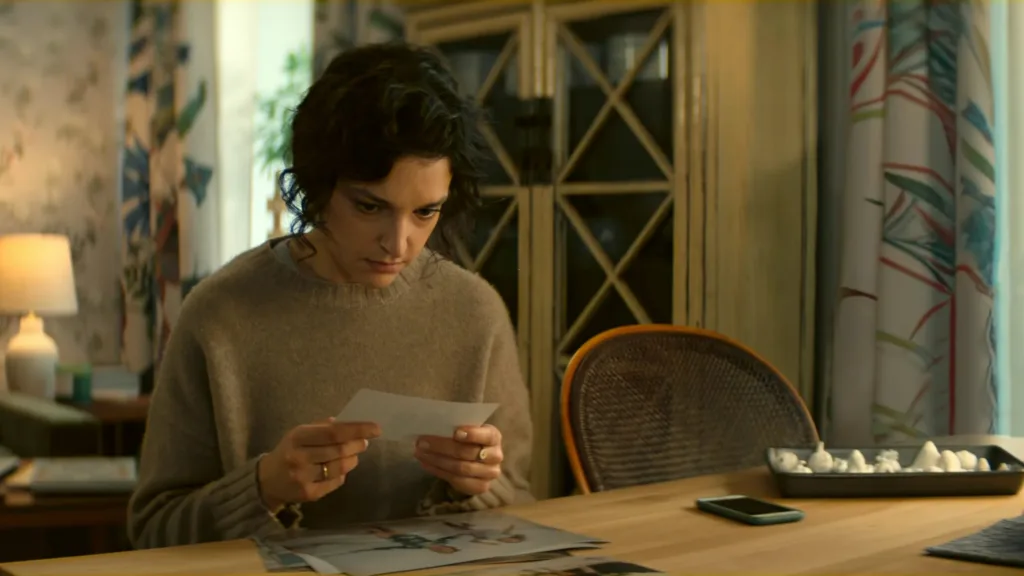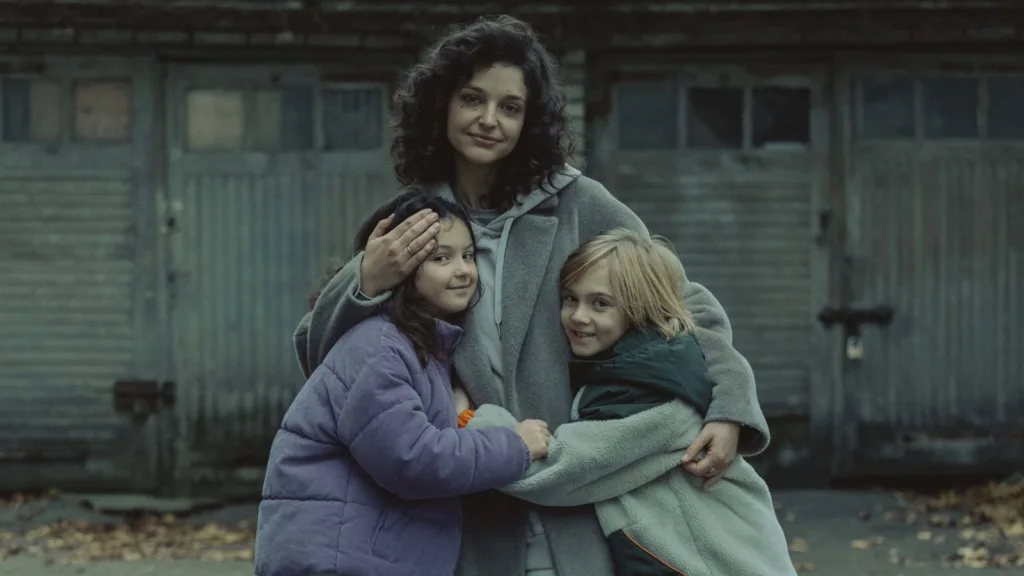Just One Look opens a space where the humdrum of everyday life shatters under the weight of concealed histories. Born from a celebrated novel, the series hints at a world where a solitary photograph disrupts the calm of an unremarkable existence.
Greta, a woman whose life once flowed in quiet certainty, finds herself cast into uncertainty upon encountering an image that refuses to fade into oblivion. Set against a distinctly Polish backdrop, the narrative unfolds in a realm suffused with shadow and muted whispers of regret.
The production’s visual language speaks in somber tones, evoking the stark contrasts between memory and oblivion. A brief sojourn into a detention facility and the sudden appearance of a relic from the past serve as opening acts that stir dormant echoes of loss. In this world, every frame and silence hints at sorrowful secrets and untold confessions.
The adaptation reinterprets written text into a moving mosaic of stark imagery and muted dialogue, inviting reflection on the fragility of identity and the spectral presence of what is forgotten. The early scenes murmur an invitation to ponder fate and the ephemeral nature of existence, leaving impressions that are both delicate and disturbingly resonant.
The Interplay of Shadows and Clues
Greta’s encounter with a weathered photograph sets off a chain reaction that disrupts the quiet contours of her existence. The series follows her as she confronts the silence surrounding her husband Jacek’s sudden disappearance—a mystery that slowly peels away layers of her past. The narrative unfurls like a dark canvas where hidden recollections and whispered secrets emerge at unexpected intervals.
At its center, the plot turns on the discovery of the photograph, an artifact that stirs memories best left unremembered. Greta is compelled to search for answers that lie buried beneath years of unspoken truths.
In this pursuit, hints of a forgotten tragedy surface, threading together personal loss with the specter of an old conflagration that haunts the collective memory. A public prosecutor’s involvement adds weight to the narrative, suggesting that even official channels are powerless against the intangible forces of regret and misfortune.
The series crafts its tale by releasing clues in measured portions—small revelations that build an atmosphere of anticipation. The interplay between present events and flashbacks creates a rhythm where time seems to collapse into a single moment of uncertainty. Sporadic images from a disastrous past intermingle with the present, evoking feelings of disorientation and a haunting sense of inevitability.
Narrative devices such as subtle hints and unexpected reversals keep the viewer in a state of perpetual inquiry. Each twist prompts questions rather than definitive answers, echoing the existential inquiry into fate and the ephemeral nature of memory.
In moments of quiet reflection, the storyline poses challenges to accepted realities, inviting viewers to ponder whether the pursuit of truth might lead only to further obscurity or a deeper confrontation with the self.
Shifting Shadows of Identity
Greta emerges from the comforts of domestic routine, her life once marked by simple joys and quiet stability. A sudden encounter with haunting memories transforms her into a seeker of truth, a wanderer in a realm where recollection and regret coalesce. The silent scars of past loss manifest in every careful gesture and fleeting glance, a testament to the burden she carries as she probes a history shrouded in obscurity.
Jacek, whose presence lingers like a half-remembered dream, remains a riddle wrapped in enigma. His unexpected absence ignites the spark that compels Greta forward, igniting a cascade of hidden connections and forsaken promises.
His character, shrouded in ambiguity and enigmatic past liaisons, triggers a series of events that force the narrative into unfamiliar terrain—a realm where absence becomes as potent as presence.
Other figures step into this unfolding drama—a determined official whose investigations hint at buried grief, and shadowy benefactors whose actions leave trails of unanswered questions. These individuals, each marked by their own fragments of sorrow and mystery, interact with Greta in ways that magnify her inner conflict. Their exchanges, at times terse and at others laden with silent understanding, enrich the unfolding narrative with complexity.
The performers bring a tangible intensity to their roles, each nuance captured through subtle expressions and deliberate pauses. The casting choices reveal a sensitivity to the material, as each actor embodies a spirit of uncertainty and fragile hope.
Interactions among these characters pulse with unspoken tensions and unexpected alliances, their relationships evolving unpredictably as secrets unravel in the quiet spaces between words.
Shadows on the Silver Screen
The directors craft a visual narrative that echoes the silent despair of forgotten memories. Their vision manifests in a chiaroscuro of modern thriller aesthetics interlaced with subtle marks of Polish cinematic artistry.
Each scene radiates a cold light, casting figures into stark relief against an often oppressive darkness. The tension felt in the narrative is not imposed through overt effects but through quiet observation—a lingering gaze, a meticulous frame, a near-whisper of sound accompanying a prolonged shot.
Lighting plays a pivotal role, carving spaces where every shadow holds a secret. Camera angles and compositions often seem to question reality itself, separating the tangible present from a past that intrudes like a fading dream.
Occasional flashbacks and surreal sequences emerge as spectral vignettes, their hazy contours blurring lines between memory and illusion. A recurring photograph appears repeatedly, its image a silent witness to a life interrupted, while burnt scars etched upon surfaces evoke the pain of unresolved histories.
Cuts and transitions are executed with deliberate precision, their rhythm echoing the unpredictable pulse of an anxious heart. Moments of slow contemplation merge with bursts of startling revelation, a cadence that neither rushes nor lingers excessively, ensuring that the viewer is caught in a perpetual state of quiet anticipation.
The production design provides an environment steeped in melancholy and introspection. Sets crafted with care capture the gloom of urban solitude, and color palettes dominated by muted hues mirror the internal desolation of the characters. Every detail, from the worn textures of a weathered wall to the fleeting gleam of a forgotten artifact, contributes to a mood that speaks to the ephemeral nature of human existence.
Echoes of Memory and Silence
The series unfurls a mosaic of thoughts centered on recollection, identity, loss, deception, and the quest for truth. Its narrative is marked by a haunting photograph that acts as a catalyst—a frozen moment that refuses to fade, igniting questions about what is remembered and what is left behind. The image stands as a silent oracle, its presence stirring reflections on how we shape our identities through the fragments of our past.
The interplay of fire and scars appears repeatedly, each instance serving as a mirror to the characters’ inner struggles. A burst of flame recalls the sudden and violent transformation of life, while the burn marks evoke the lingering impact of unhealed wounds. These symbols stir a disquieting awareness that memory is as much about what is concealed as it is about what is revealed.
The score—a murmuring undercurrent of sound—guides the atmosphere through dark corridors of thought. It whispers of hidden regrets and mournful reckonings, lifting the spirit of the visuals and imbuing each frame with a spectral quality. There are moments when the music swells unexpectedly, punctuating the silence with the sound of despair, or softens to a fragile murmur that suggests a fleeting hope.
Every visual element and auditory cue converges to form an experience that speaks to the fragile nature of existence. The series invites reflection on the ways in which personal history and unspoken truths shape a life lived in the shadows of its own memories.
Echoes That Linger
The series forms a compelling mosaic of shifting narratives and haunting tension, drawing the viewer into a world where every shadow holds a secret. Its narrative intricacies coalesce with a spectral atmosphere, crafting an experience where unexpected turns and raw emotions intermingle. The twisty plot unfolds with a measured rhythm that stokes quiet apprehension while whispering of hidden sorrows.
Notable is the artful use of symbolism—images of fading photographs and burnished scars echo deep personal losses and the wear of time. Strong performances radiate a fragile intensity, imbuing each character with a palpable sense of inner conflict and yearning.
Yet, there is a hesitance in some character arcs, a fleeting sense that deeper emotional landscapes remain partially veiled. The interplay of strength and vulnerability within the cast provokes both admiration and lingering questions about what remains unsaid.
The series lures the dedicated viewer to reengage with its labyrinth of clues and reflective pauses. Its episodic structure invites multiple viewings, each revisit offering the possibility of unearthing further nuance in its visual and auditory interplay. A careful balance of suspense and introspection encourages an immersive viewing experience, one where the mind drifts between certainty and uncertainty.
For those who appreciate contemplative narratives and the weight of existential inquiry, the series provides a rich tapestry of hidden meanings and emotional reverberations. Its measured pacing and dark imagery cultivate a state of restless reflection, leaving impressions that refuse to fade with the final scene.
The Review
Just One Look
A deep meditation on memory and identity, the series captivates with its arresting visuals and a mystery that unfolds with deliberate pace. While some character paths remain partly unresolved, the atmospheric tension and reflective undercurrents engage the viewer and invite repeated discovery.
PROS
- Striking visual imagery
- Intricate narrative structure
- Compelling atmospheric tension
- Strong central performance
- Thought-provoking symbolism
CONS
- Some character arcs feel underdeveloped
- Pacing may challenge casual viewers
- Narrative complexity can be overwhelming
- Certain plot twists lack full clarity













